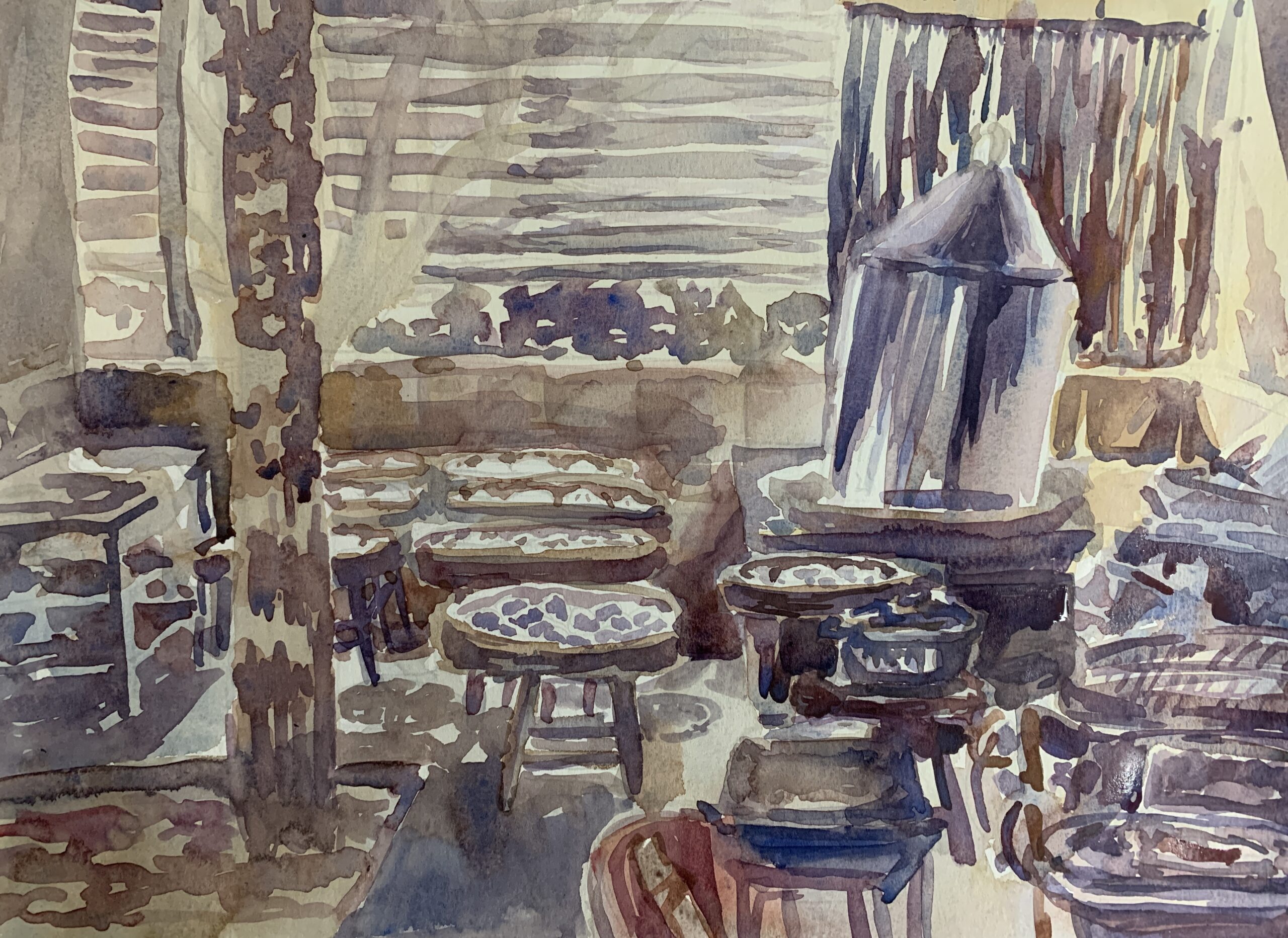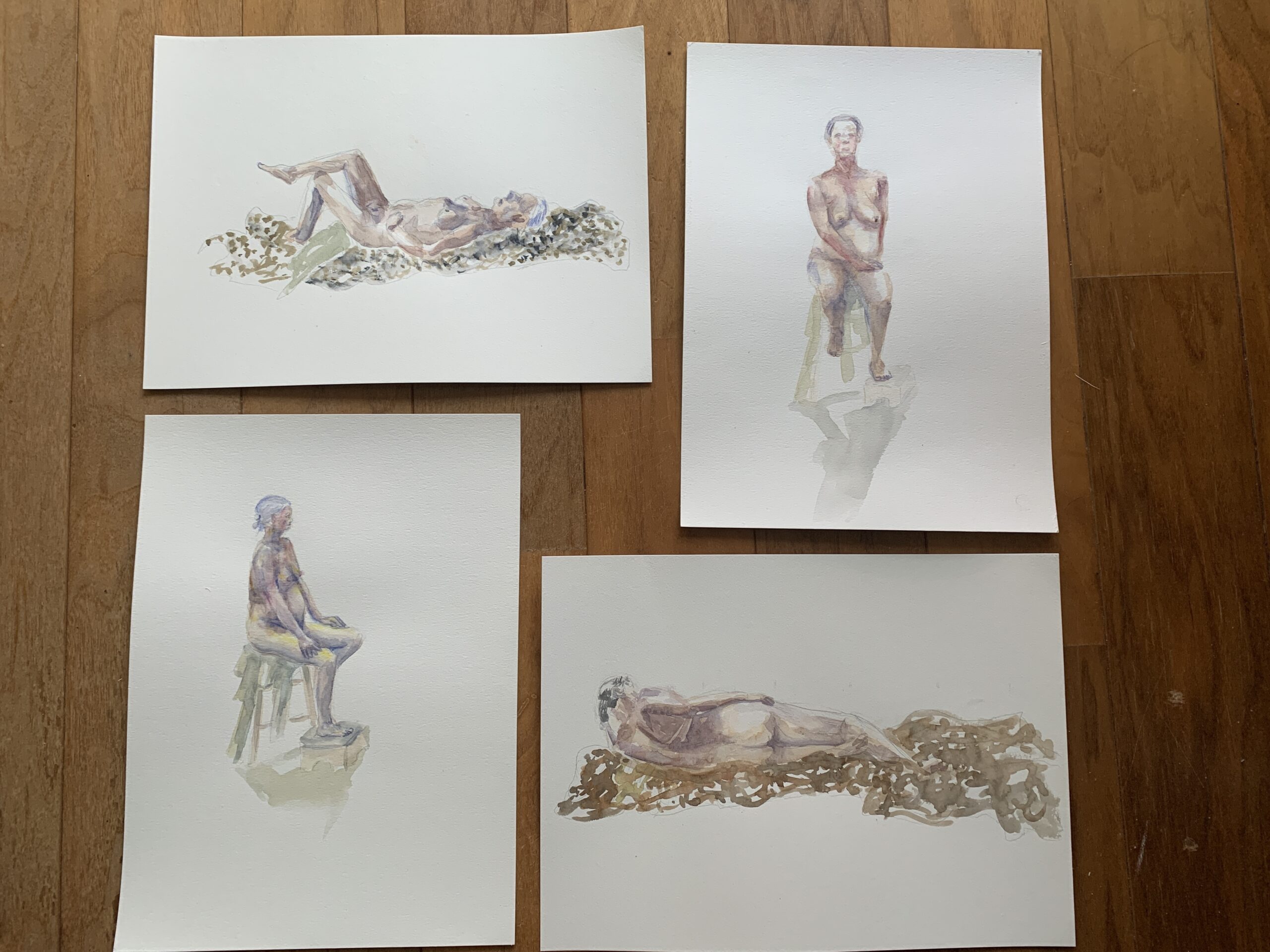By chance I came across the Malcolm Gladwell audiobook on Paul Simon (the Simon and Garfunkel Simon) called Miracle and Wonder some time ago with the Toronto Public Library’s ebook system.
I hardly knew who he was beyond being able to recognize songs like Bridge Over Troubled Water. But I was impressed with Gladwell’s description of how Simon is able to source from a variety of places and that is how he comes up with fresh sounding music that has changed over the decades. I listened to the entire audiobook.
Apparently this is what creativity is—a mashed up new patty of stuff that no one has tasted before but goes deliciously together.
I find it hard to pin down exactly where my style comes from. The last teacher for my watercolour class remarked that I used a lot of saturated colours in my paintings. I hardly recognized this. In comparison with other students, I could see what she meant. But frankly, I focused on getting the values down right. At the same time, why wouldn’t you use all those bright and lovely colours when sketching is often in black and white?
The best paintings are ones where I have a very good idea ahead of time what I want it to turn out to look like. Then a lot happens along the way and I end up changing things.
The ones that are most surprising are when I’m just focused on something other than the outcome and have a new material or technique I’d like to try. There’s less pressure somehow. Perhaps that is one of the spring wells for creativity?
In The Artist’s Way and the Art of Uncertainty by Dennis Merrit Jones, both books discuss this idea of tapping into a spiritual essence to find the source of potential creativity. There is this element of “faith” (not necessarily in the “God” way), but faith that what you are creating is meant to be created by the universe, and we are conduits for that source.
Jones discusses how we all are sitting in a lake of potential, but we don’t realize it. So we add limits, boundaries, and labels to ourselves. By doing so, we limit our growth. I also like the idea that uncertainty is something that brings about growth. He has a part about how his daughter loved only the bedtime story that she had heard before, because it is safe and comforting to know how it all works out in the end.
Creativity therefore is something where we are entering the unknown, unsure of how it will turn out. But if we think that success is based only by the labels that society gives us, we are not seeing that each might be a larger step to a grander project.
There was a really cheesy line in the Dungeons & Dragons: Honour among Thieves movie I watched recently where the character Chris Pine plays proclaims (in a very dramatic scene) he cannot fail because he never stops trying whenever he fails miserably at something. The acting came out all wrong (all the characters bandy together after his rousing speech), but the actual concept is a neat one.
Jones’ book talks about passion, persistence and perseverance that will take us places. Persistence is the act of doing leading to results. Perseverance is the intention behind it, knowing the vision to keep going even in spite of set-backs and failure.
Creativity inherently has failure in it. The concept that is brought about doesn’t seem as good as the one in our mind. Maybe that is because the one in the mind is more like the idea of perfection that we can all pluck from.


